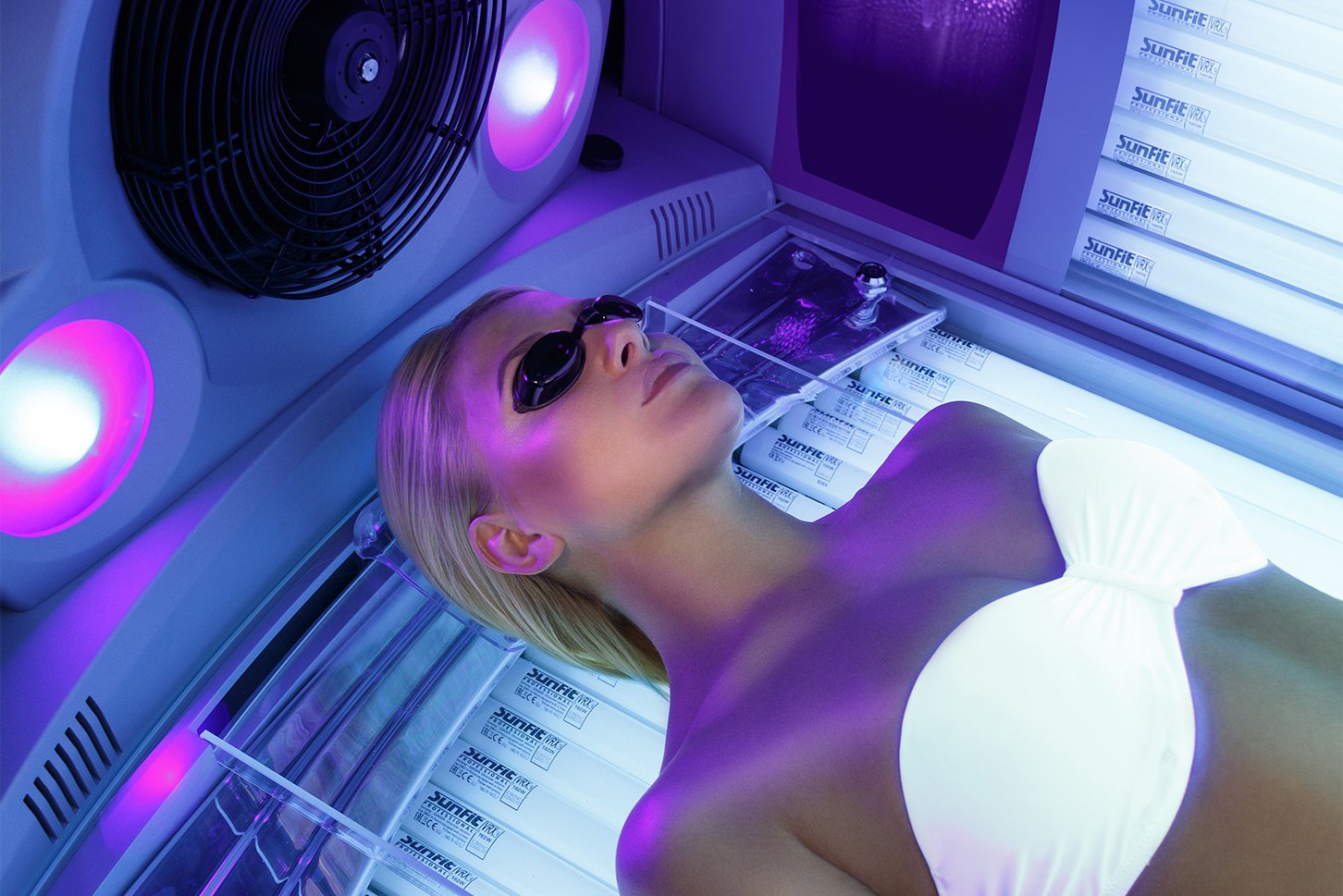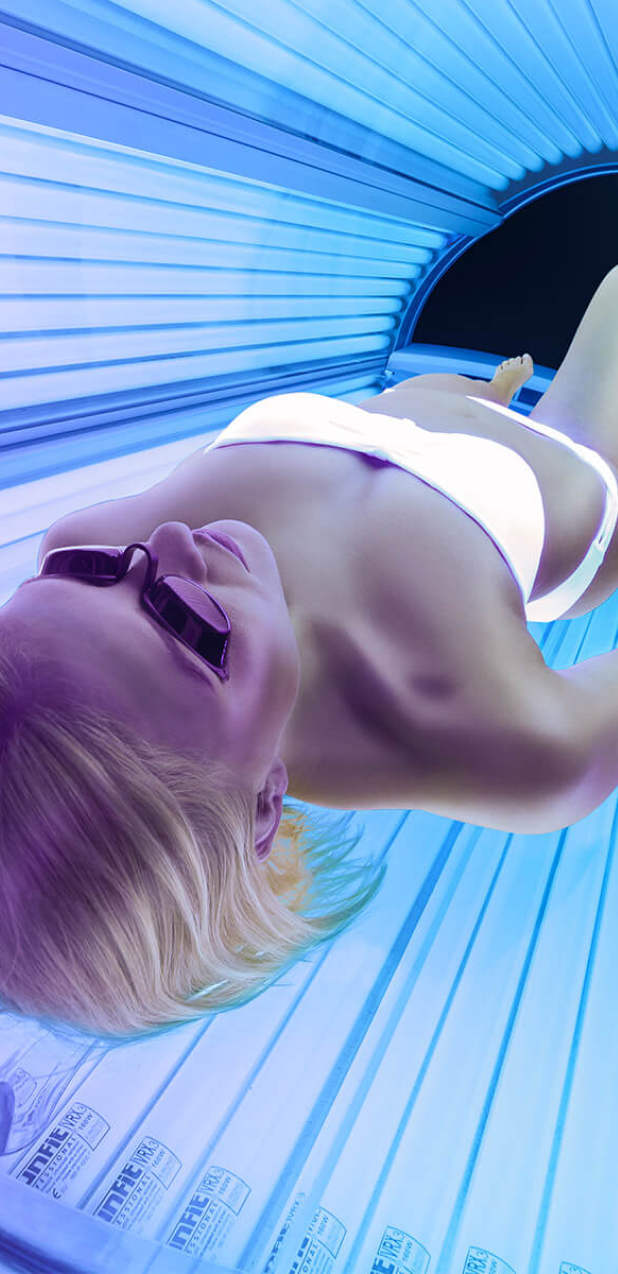The Truth About Tanning: What Salon Owners Should Know
Important Disclaimer: The information in this article is for educational purposes only and should not be considered medical advice. Individual responses to UV exposure vary significantly based on skin type, health conditions, and other factors. Always encourage your clients to consult with their healthcare provider before beginning any tanning regimen, especially if they have a history of skin conditions, are taking medications that increase photosensitivity, or have concerns about UV exposure. As a salon owner your role is to provide a safe environment and proper guidance—not medical advice.
Running a successful tanning salon goes far beyond offering the latest sunbeds or competitive pricing. In an industry where misinformation spreads faster than a summer tan, building trust with your clients means separating fact from fiction. When customers walk into your salon armed with half-truths they've read online or heard from friends, your ability to provide accurate, balanced information becomes one of your most valuable assets.
The reality is that many potential customers avoid tanning salons entirely because of myths they've encountered. Others may have unrealistic expectations based on misconceptions. By understanding the most common myths surrounding indoor tanning—and knowing the facts to counter them—you can educate your clients, set proper expectations, and ultimately build a more trustworthy business.
Let's examine some of the most persistent tanning misconceptions and explore the facts that can help you guide your clients toward informed decisions.
"UV beds are always unsafe and should be avoided completely"
This black-and-white thinking ignores the nuances of responsible tanning practices. While UV exposure does carry risks that should never be minimized, the idea that all sunbed use is inherently dangerous oversimplifies the situation.
The facts: Professional-grade sunbeds in properly managed salons offer several safety advantages over uncontrolled sun exposure. These beds are designed to deliver precise, consistent UV output, eliminating variables like changing weather conditions, time of day, or seasonal variations that affect outdoor tanning.
Your salon's safety protocols play a crucial role here. Trained staff can assess skin types, recommend appropriate session lengths, and monitor clients' tanning progress. Clear usage guidelines, mandatory eye protection, and proper maintenance of equipment all contribute to a safer tanning environment.
The key is moderation and proper guidance. Just as outdoor sun exposure can be enjoyed safely with proper precautions, indoor tanning can be part of a responsible approach to achieving a tan when done correctly and in moderation.
"Tanning beds only work for people with fair skin"
This myth likely stems from the visible speed at which fair-skinned individuals develop colour, but it ignores the tanning potential of all skin types.
The facts: People across the entire spectrum of skin types can achieve beautiful results with professional tanning—it's all about understanding how different skin types respond to UV exposure and adjusting sessions accordingly.
The Fitzpatrick skin typing system, used by professionals worldwide, recognizes six different skin types, each requiring different approaches to safe tanning. While Type I skin (very fair, burns easily) requires the most caution and shortest sessions, Type IV, and V skin (olive and brown tones) can often handle longer sessions and may actually achieve more dramatic results.
Proper skin type assessment and customized session recommendations ensure that clients with darker skin tones don't get frustrated with slow results, while those with fair skin don't experience burning or discomfort.
"You need to tan every day to see results"
This dangerous misconception has probably caused more tanning-related problems than any other myth. The pressure to achieve instant results leads some clients to overdo it, risking skin damage and poor tanning outcomes.
The facts: Effective tanning is about patience, not frequency. Most people begin to see noticeable colour development within three to five sessions, depending on their skin type and starting base tan. More importantly, daily tanning is counterproductive—skin needs recovery time between UV exposures to develop melanin properly.
The optimal tanning schedule typically involves sessions every 24-48 hours during the building phase, then maintenance sessions once or twice weekly, but this is different from person to person. You want an approach that doesn't just produce better, longer-lasting results but also minimizes the risk of overexposure.
Share this timeline with new clients during their consultation. Setting realistic expectations prevents disappointment and reduces the temptation to over-tan. Consider creating visual guides showing typical tanning progressions for different skin types—this helps clients understand that beautiful results take time.
"Sunbeds are more damaging than natural sunlight"
This myth often comes from people who don't understand the controlled nature of professional tanning equipment versus the unpredictable variables of outdoor sun exposure.
The facts: Outdoor tanning presents numerous uncontrollable factors that can lead to unexpected overexposure. Cloud cover can be deceiving, allowing harmful UV rays through while making the sun feel less intense. Reflection from water, sand, or snow can significantly increase UV exposure without warning. Time of day, season, altitude, and geographic location all affect outdoor UV intensity in ways that are difficult to predict or control.
Professional sunbeds, by contrast, deliver consistent, measured UV output every session. Modern equipment includes built-in timers, regulated lamp specifications, and safety features that ensure predictable results. This consistency allows for much better control over total UV exposure – as long as users adhere to responsible practices.
Additionally, indoor tanning eliminates weather-related pressure to "make the most" of sunny days by staying out too long. Clients can maintain their tanning schedule regardless of weather, reducing the temptation to overexpose during limited sunny periods.
"Tanning is purely cosmetic with no other benefits"
While the aesthetic appeal of a tan is undeniable, dismissing indoor tanning as purely vanity-driven ignores some legitimate reasons people choose professional tanning services.
The facts: Many clients report psychological benefits from tanning sessions, including improved mood and reduced stress. The controlled environment, brief respite from daily pressures, and boost in confidence that comes with looking their best can contribute to overall well-being.
Some individuals also use controlled UV exposure as part of managing certain skin conditions, though this should always be done under medical supervision. The key is recognizing that your salon provides more than just cosmetic services—you're offering a controlled environment for people who choose to include UV exposure as part of their personal care routine.
The relaxation aspect shouldn't be underestimated either. For many clients, those few minutes in a sunbed represent precious "me time" in their busy schedules. This wellness angle can be part of your salon's appeal without overstating or making medical claims.
Read more: Using Sunbeds to Improve Your Mental Health – What to know
"Base tans don't provide any protection"
The relationship between base tans and sun protection is often misunderstood, leading to both overconfidence and complete dismissal of any protective benefits.
The facts: A gradual base tan does provide some natural protection against UV exposure—research suggests it can offer protection roughly equivalent to SPF 2-4. However, this minimal protection should never replace proper sun safety practices like sunscreen use, protective clothing, and limiting exposure during peak hours.
The value of a base tan isn't in replacing sun protection but in preparing skin for controlled sun exposure while reducing the stark contrast between winter-pale skin and summer sun exposure. Many clients use professional tanning to gradually prepare their skin before beach vacations, reducing their risk of severe burns during the first days of sun exposure.
Be clear with clients that a base tan is a starting point, not a shield. Emphasize that proper sun protection remains essential regardless of their tanning status.
Read more: The Ultimate Guide to the Benefits of Sunbed Tanning
"Tanning beds cannot impact vitamin D levels"
One of the most widespread misconceptions is that indoor tanning provides no vitamin D benefits, while others incorrectly believe that any UV exposure automatically boosts vitamin D significantly.
The facts: The relationship between tanning beds and vitamin D is more nuanced than most people realize. Vitamin D synthesis requires UVB radiation specifically—the same type that causes sunburn but also triggers the skin's natural vitamin D production process. Many modern tanning beds emit primarily UVA radiation for cosmetic tanning, with limited UVB output, which means minimal vitamin D synthesis.
However, some professional tanning equipment does include UVB lamps or hybrid systems that can contribute to vitamin D production. The key distinction is understanding your equipment specifications and being transparent with clients about what type of UV exposure they're receiving.
It's important to note that vitamin D synthesis depends on multiple factors including skin type, session length, the specific UV spectrum of your equipment, and individual health factors. While some clients may experience vitamin D benefits from UVB-inclusive tanning sessions, this should never be marketed as a primary health benefit or medical treatment.
The responsible approach is to acknowledge that some tanning equipment may contribute to vitamin D synthesis while emphasizing that dedicated vitamin D management should involve healthcare providers who can assess individual needs, recommend appropriate supplementation, and monitor vitamin D levels through proper testing.
Building Trust With Your Clients Through Education
Addressing these myths with your clients isn't about convincing everyone to tan—it's about ensuring that those who choose to do so can make informed decisions. When you take time to educate rather than simply sell, you build the kind of trust that turns occasional visitors into loyal, long-term clients.
Train your staff to recognize these common misconceptions and respond with factual, balanced information. Create consultation processes that assess not just skin type but also client knowledge and expectations. Consider developing educational materials that clients can take home, reinforcing the responsible practices you promote in your salon.
Remember that different clients will have different comfort levels with UV exposure, and that's perfectly fine. Your role is to provide accurate information, maintain the highest safety standards, and respect each client's personal choices about their tanning routine.
When you position your salon as a source of reliable information rather than just a place to get a tan, you differentiate yourself from competitors and build the kind of reputation that attracts discerning clients who value professionalism and safety.
Ready to elevate your salon's reputation as a trusted source for responsible tanning? Start by training your team on these facts and developing clear educational materials for your clients. If you're looking to upgrade your equipment or refine your safety protocols, our team can help you create an environment that prioritizes both results and responsibility. Discover all our services here.
Related Articles


